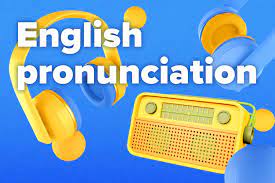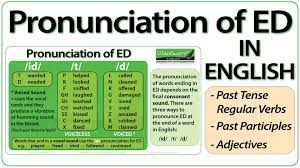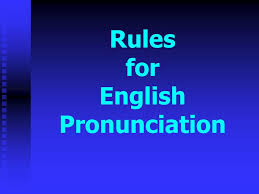What is Pronunciation Rules English?
Pronunciation rules English are guidelines or patterns that help us understand how to correctly pronounce words and sounds in the English language. These rules provide a framework for producing the sounds, stress, and intonation patterns that makeup spoken English.
Here are some general aspects of pronunciation rules English:
- Sound production: English has a variety of sounds, including vowels, consonants, and combinations of both. Pronunciation rules guide us on how to form these sounds using our vocal apparatus, such as the position of the tongue, lips, and vocal cords.
- Stress and intonation: English words have specific syllables that are stressed or emphasized more than others. Pronunciation rules help identify which syllables should receive stress, which impacts the rhythm and melody of spoken English. Intonation patterns, including rising and falling pitch, convey meaning and emotions.
- Silent letters: English words often have silent letters, such as the silent “e” at the end of words or silent consonants in specific combinations. Pronunciation rules help us understand when certain letters are not pronounced and how they affect the sounds of other letters.
- Regularity and exceptions: While there are general pronunciation rules, English also has many exceptions due to historical influences, borrowed words, and regional accents. It’s important to be aware of both regular patterns and irregularities in pronunciation.
- Minimal pairs: Minimal pairs are pairs of words that differ by only one sound. Understanding minimal pairs helps identify and distinguish between similar sounds, such as “ship” and “sheep” or “pin” and “pen.”
- Syllable structure: Pronunciation rules address how syllables are formed and how they affect the pronunciation of words. English has different syllable structures, and knowing these structures can help with correct word stress and vowel sounds.
- Liaisons and linking: In connected speech, certain sounds and words blend together or undergo changes to make speech flow smoothly. Pronunciation rules cover liaisons (pronouncing the final consonant of one word before a vowel sound in the next word) and linking (connecting words together without pauses).
By learning and following pronunciation rules, we can improve our spoken English and make ourselves better understood by others. Practicing these rules, listening to native speakers, and using resources like pronunciation guides or dictionaries can help refine our pronunciation skills. Remember that pronunciation rules English Language and is a skill that develops over time with practice and exposure to spoken English.

Pronunciation Rules of Silent “e”
Certainly! The first point of the pronunciation rule states the concept of the silent “e” in English words. When a word ends with an “e,” it is often silent and affects the pronunciation of the preceding vowel.
The purpose of the silent “e” is not to be pronounced but rather to modify the sound of the vowel that comes before it. Here are some key aspects to understand about the silent “e”:
- Lengthens the preceding vowel sound: The primary role of the silent “e” is to lengthen the sound of the vowel that comes before it. For example:
- “Bite” is pronounced as “bait” because the silent “e” lengthens the “i” sound.
- “Made” is pronounced as “maid” because the silent “e” lengthens the “a” sound.
- Affects the pronunciation of the vowel sound: The presence of the silent “e” can alter the pronunciation of the vowel in the word. It often changes the vowel from a short sound to a long sound. Here are a few examples:
- “Hop” has a short “o” sound, while “hope” has a long “o” sound due to the silent “e.”
- “Cut” has a short “u” sound, while “cute” has a long “u” sound due to the silent “e.”
- Does not apply in all cases: It’s important to note that the silent “e” rule doesn’t apply to every word ending in “e.” Some words retain the pronunciation of the final “e.” For example:
- “See” is pronounced as “see,” where the “e” is not silent and contributes to the sound of the word.
- Exceptions to the rule: There are exceptions to the silent “e” rule, where the “e” at the end of a word is pronounced. These exceptions are often words borrowed from other languages or have unique origins. For example:
- “Cafe” is pronounced as “ka-fey” with the final “e” pronounced.
- “Resume” is pronounced as “rez-uh-mey” with the final “e” pronounced.
Understanding and recognizing the silent “e” is important for proper pronunciation in English. It helps to be aware of this rule when reading and pronouncing words correctly. Remember, though, that pronunciation in English can have variations, and it’s helpful to listen to native speakers and imitate their pronunciation for better fluency.

Table of Contents
Pronunciation of “th”
Certainly! The second point of the pronunciation rules in English focuses on the pronunciation of the “th” sound in English. The English language has two “th” sounds: voiced “th” as in “the” and voiceless “th” as in “think.” Understanding how to produce these sounds correctly is essential for clear pronunciation. Here’s a detailed explanation:

- Voiced “th” sound:
- The voiced “th” sound is represented by the letters “th” in words like “the,” “this,” and “other.”
- To produce this sound, place the tip of your tongue gently between your upper and lower front teeth, and exhale air while vibrating the vocal cords.
- The voiced “th” sound is represented by the International Phonetic Alphabet (IPA) symbol /ð/. It is a unique sound in English and not found in many other languages.
- Examples: “the,” “they,” “mother,” “brother.”
- Voiceless “th” sound:
- The voiceless “th” sound is represented by the letters “th” in words like “think,” “thought,” and “bath.”
- To produce this sound, place the tip of your tongue gently between your upper and lower front teeth, and exhale air without vibrating the vocal cords.
- The voiceless “th” sound is represented by the International Phonetic Alphabet (IPA) symbol /θ/.
- Examples: “think,” “thought,” “bath,” “thin.”
- Common challenges and tips:
- Some non-native English speakers may find it challenging to produce the “th” sounds as they may not exist in their native language. Here are some tips to help overcome these challenges:
- Practice tongue placement: Focus on placing the tip of your tongue correctly between your teeth for both the voiced and voiceless “th” sounds.
- Airflow: Make sure there is a steady and controlled flow of air as you pronounce the sound.
- Mimic native speakers: Listen to and imitate the pronunciation of native English speakers to develop a natural “th” sound.
- Some non-native English speakers may find it challenging to produce the “th” sounds as they may not exist in their native language. Here are some tips to help overcome these challenges:
- Minimal pairs:
- Minimal pairs are pairs of words that differ only in one sound. Here are some minimal pairs to help distinguish between the voiced and voiceless “th” sounds:
- “This” (voiced) vs. “thick” (voiceless)
- “That” (voiced) vs. “thin” (voiceless)
- “Breathe” (voiced) vs. “breeze” (voiceless)
- Minimal pairs are pairs of words that differ only in one sound. Here are some minimal pairs to help distinguish between the voiced and voiceless “th” sounds:
- Common mistakes to avoid:
- Replacing “th” sounds with other sounds: Non-native speakers may substitute the “th” sound with “f” or “s” sounds, which can lead to miscommunication. Practice and awareness can help overcome this.
- Mispronouncing voiced and voiceless “th”: Make sure to differentiate between the two sounds to pronounce words accurately.
Remember, consistent practice and exposure to native English speakers can significantly improve your pronunciation of the “th” sounds.
Pronunciation Rules in English Consonant Clusters:
The third point of the pronunciation rules in English refers to the distinction between long and short vowel sounds in English. Understanding the difference between these two types of vowel sounds is crucial for accurate pronunciation. Let’s explore this point in detail:
- Long vowel sounds:
- Long vowels are pronounced with an extended duration and typically have a single-letter representation.
- Examples of long vowel sounds include the “a” in “cake,” the “e” in “feet,” the “i” in “time,” the “o” in “boat,” and the “u” in “rule.”
- Long vowel sounds are often produced with an open mouth and a steady airflow.
- Short vowel sounds:
- Short vowels are pronounced with a shorter duration and typically have multiple letter representations or a single letter representation.
- Examples of short vowel sounds include the “a” in “cat,” the “e” in “bed,” the “i” in “sit,” the “o” in “hot,” and the “u” in “bus.”
- Short vowel sounds are often produced with a slightly closed mouth and a relatively quicker airflow.
- Pronunciation patterns:
- Long vowel sounds are often found in words with a silent “e” at the end, as mentioned in the first pronunciation rule. The silent “e” lengthens the vowel sound that comes before it. For example, “bite” (long “i”) versus “bit” (short “i”).
- Short vowel sounds are commonly found in closed syllables, where a consonant follows the vowel. For example, “cat” (short “a”) and “sit” (short “i”).
- Minimal pairs:
- Minimal pairs are pairs of words that differ only in one sound, either a long vowel sound versus a short vowel sound. Practicing these minimal pairs can help in distinguishing between long and short vowel sounds. For example:
- “Cane” (long “a”) versus “can” (short “a”)
- “Seed” (long “ee”) versus “sit” (short “i”)
- “Go” (long “o”) versus “got” (short “o”)
- Minimal pairs are pairs of words that differ only in one sound, either a long vowel sound versus a short vowel sound. Practicing these minimal pairs can help in distinguishing between long and short vowel sounds. For example:
- Common challenges and tips:
- Non-native English speakers may find it challenging to differentiate between long and short vowel sounds, especially if their native language doesn’t make this distinction.
- It’s essential to pay attention to vowel length when learning new words and to mimic the pronunciation of native English speakers.
- Practice using minimal pairs to train your ear to recognize and produce the subtle differences between long and short vowel sounds.
Remember that there are exceptions and variations in English pronunciation, and some vowel sounds may vary depending on regional accents. Regular practice, listening to native speakers, and paying attention to vowel length in words will help improve your pronunciation of long and short vowel sounds.

Pronunciation Rules in English of “s”:
- Stress on syllables:
- English words often have stressed and unstressed syllables. Pay attention to the emphasized syllable in a word to pronounce it correctly. For example, “present” has stress on the second syllable (/pre-ZENT/).
- Pronunciation of “r”:
- The pronunciation of the letter “r” can vary in different English accents. In some accents, it is pronounced with a rolling or trilling sound, while in others, it is softer or even silent in certain positions.
- Diphthongs:
- Diphthongs are two vowel sounds combined in a single syllable. Common examples include “oi” in “coin” and “ou” in “house.” Practice blending the sounds smoothly.
- Schwa sound:
- The schwa sound (/ə/) is the most common vowel sound in English. It is a neutral and unstressed sound often found in unstressed syllables. For example, the “a” sound in “about” or the “e” sound in “taken.”
Remember that pronunciation can vary based on accents and regional differences in English. It’s always helpful to listen to native speakers and practice imitating their pronunciation to improve your own skills.
References and Books for Pronunciation Rules in English
- https://www.englishpronunciationmadrid.com/the-lli-rule-and-its-exceptions-my-tfg/references/
- English Rules

